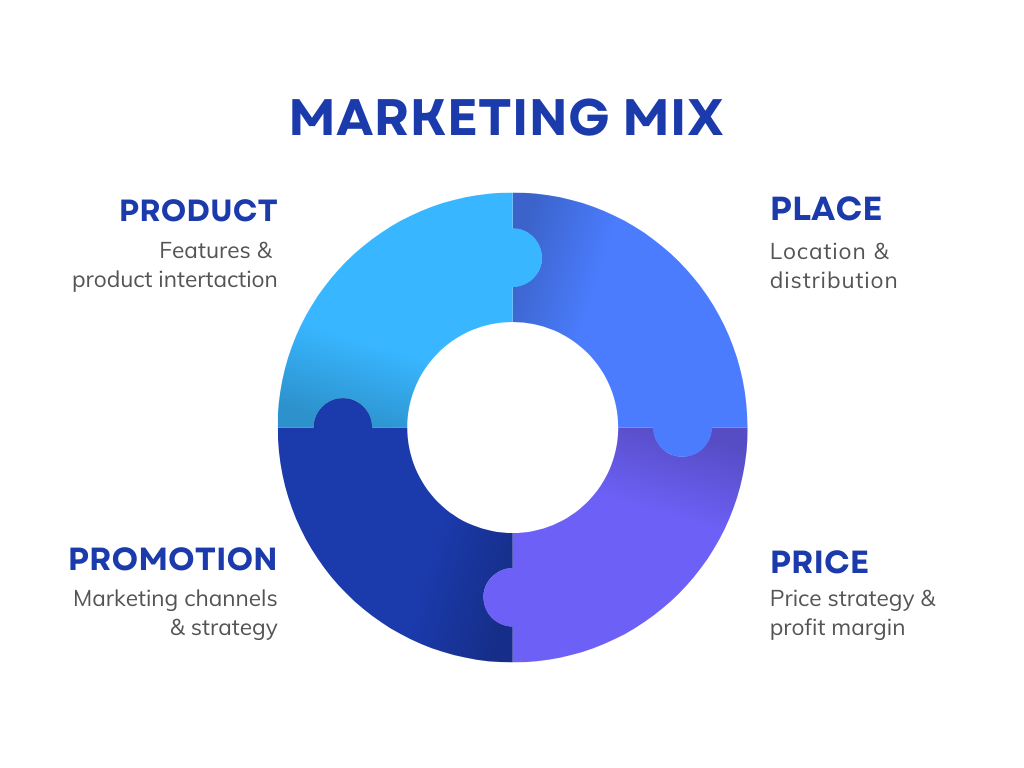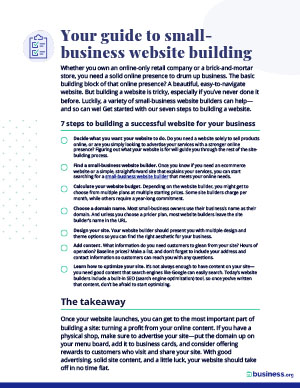We are committed to sharing unbiased reviews. Some of the links on our site are from our partners who compensate us. Read our editorial guidelines and advertising disclosure.
What is the 4P Marketing Matrix?
The principle of the 4P Matrix is that marketing decisions usually fall into four controllable categories: product, place, price and promotion. Carefully positioning your product in each category will generate the greatest response from your target market.
The 4P Matrix dates back to the 1960s, and is arguably the most frequently used marketing mix matrix because it’s simple and it works. This marketing mix matrix can help you define your options and identify marketing strategies, whether you’re planning to launch a new product or you’re evaluating an existing one.
As a small business owner, learning to use the 4Ps successfully gives you an advantage over the competition—and that’s good for your bottom line.

1. Product
Considerations include: benefits, features, and product interaction
From the most basic to extremely detailed, there are a number of questions to ask when making product marketing decisions. Here are a few of the most important:
- What need does your product satisfy? What problem does it solve, or what challenge does it help the customer overcome? In other words, what will the customer gain by using your product? How will it benefit him or her?
- What features does the product have that help it meet the needs of your customer?
- What is your product’s competitive advantage? How is your product different from your competitors? Why should the customer buy your product instead of your competition’s?
- Let others interact with your product, and then ask if it includes any features that aren’t really useful. Also, ask if there are features the product should offer, but doesn’t.
Under what circumstances do you anticipate the customer with interact with the product? How and where will they engage with it?
Real life example: In Coca Cola's case, they have a wide product range, and many of them have been invented due to the needs of their audience (caffeine-free, zero-sugar, etc). They have adapted well to the concerns of the public regarding their original sugary drinks and continue to be a very valuable brand.
By signing up I agree to the Terms of Use and Privacy Policy.
2. Place
Considerations include: location, how to get product into the market, and distribution
Questions to ask about place range from how it will be distributed to what market it will be found in. Here are a few questions to get you started thinking about place:
- Where will your potential buyer look for your product? Will it be found in a brick and mortar store, in a catalog, only on the web or a combination of one or more locations?
- If your product will be sold in a brick and mortar store, what characteristic will the store have? For example will it be sold in a boutique, or sold through a discount store? Will it be found in a house wares store, grocery store, children’s store, etc?
- What is your plan for getting your product into the market.
- Will you sell directly to your customers or use a distributor or a sales team?
How will you manage inventory?
Real life example: With Coca Cola, they have a wide network of distributors that sell their products across the world. This includes in grocery stores, gift shops, cafes, and restaurants.
3. Price
Considerations include: price strategy, discounts, and profit margin
When considering what price to set your product at, remember that your customer must perceive value in your product and that means you won’t win customers on price alone. Consider these questions when trying to set your product price:
- What amount does your competition sell the product for? Are you able to set and maintain a competitive market price? How will your price compare to your competitors?
- Will you offer discounts or buying advantages? Will you offer a loyalty program or rewards program?
- Will your product be offered at more than one price point? If so, why?
- What is the lowest price you can set for your product and still maintain the profit margin you need?
What part or process is the biggest contributor to the product’s retail price? Can you do anything to lower the cost of that part or process?
Real life example: Coca Cola is known for it's competitor pricing, meaning it prices its products according to its competitors (Pepsi). They also offer different price points based on location.
4. Promotion
Considerations include: marketing channels, marketing strategy, and seasonality
Even the best products won’t sell if your customer doesn’t know about them. When considering how you will promote your product, ask yourself these important questions:
- By what means will you get your marketing message to your potential customer? For example, will you use direct mail, billboards, the web, social media, etc?
- When will you start promoting your product and what is your reason for promoting it at that time? Will you promote the product two months before its release? Six months prior?
- Is the product seasonal? If so, how will that impact when, where and how you promote it?
If you’re using a social media platform to promote your product, when (what day/s of the week and what time/s) does your target engage with that social media outlet? For example, moms who work outside the home interact with social media at different times of the day than college students.
Real life example: There are numerous strategies Coca Cola uses to promote its global brand—from different types of media advertising campaigns to sponsorships and partnerships.
Use the 4P Matrix to analyze your current products as well as any new products you're developing. Make sure to follow up with products periodically to make sure it's still on target with your demographic. The 4Ps model is just one of several marketing mix matrixes that have emerged over the last several decades, but it’s simple yet comprehensive framework makes it one of the very best.
Related reading
4Ps of Marketing FAQ
The 4P framework is used to help marketers make decisions regarding their target audience using 4 different variables in the marketing mix.
The 4Ps are product, place, price, and promotion. The 4Cs consist of customer, cost, communication, and convenience.
The 4Ps take a producer-oriented approach to marketing, while the 4Cs take a customer-oriented approach.
First, identity the product or service you're working with. Then, go through each variable and answer the relevant questions. Keep asking questions until you feel you've satisfied your marketing mix.
Jerome McCarthy invented the framework (also referred to as the producer-oriented model) in 1960.
Disclaimer
At Business.org, our research is meant to offer general product and service recommendations. We don't guarantee that our suggestions will work best for each individual or business, so consider your unique needs when choosing products and services.





